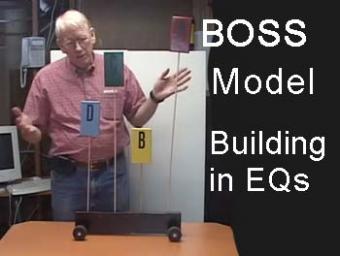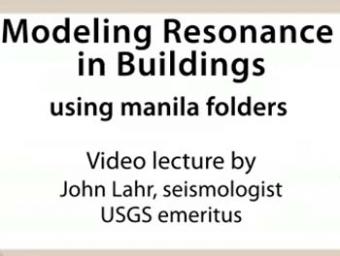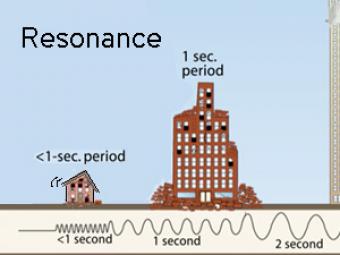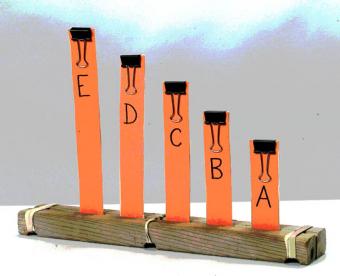How can we show how a building will respond to seismic waves?
Building Oscillation Seismic Simulation, or BOSS, is an opportunity for students to explore the phenomenon of resonance of buildings that experience earthquake shaking. All buildings have a natural resonance‚ frequency. If a building is shaken at this frequency, it will oscillate with large amplitude and may be severely damaged or destroyed. If the same building is shaken at either lower or higher frequencies, it will oscillate with smaller amplitudes and may withstand earthquake shaking without significant damage. Students can explore this phenomenon by experimenting with the natural frequencies of the BOSS Model and gain insights into how structures behave dynamically during earthquake shaking.
Animation shows:

This video lecture shows John Lahr (USGS Seismologist Emeritus) describing the BOSS experiment that models oscillations of different height buildings.

John Lahr, US Geological Survey Seismologist, demonstrating a cheap and kid-friendly version of the BOSS model that shows how buildings of different height oscillate during earthquake shaking.

All buildings have a natural period, or resonance, which is the number of seconds it takes for the building to naturally vibrate back and forth. The ground also has a specific resonant frequency. Hard bedrock has higher frequencies softer sediments. If the period of ground motion matches the natural resonance of a building, it will undergo the largest oscillations possible and suffer the greatest damage.

All buildings have a natural frequency of oscillation or resonance frequency. When seismic waves shake the ground beneath a building at its resonance frequency, the structure will begin to sway back and forth. This concept can be demonstrated in the classroom using the BOSS Model Lite as a discrepant event demonstration to engage students in earthquake-engineered buildings.
We encourage the reuse and dissemination of the material on this site as long as attribution is retained. To this end the material on this site, unless otherwise noted, is offered under Creative Commons Attribution (CC BY 4.0) license